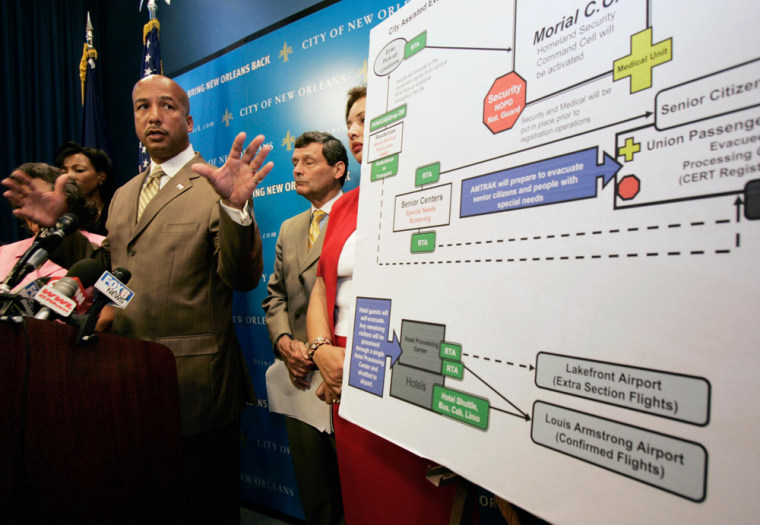Mayor Ray Nagin unveiled a new evacuation strategy for New Orleans on Tuesday that relies more on buses and trains and eliminates the Superdome and Convention Center as shelters.
“There will be no shelter of last resort,” Nagin declared.
The mayor, facing a runoff election May 20, has been widely criticized for failing to get the city’s most vulnerable residents out of town as Hurricane Katrina approached.
The Superdome and Morial Convention Center became a scene of misery for days after the Aug. 29 hurricane as thousands of evacuees, many of them ill or elderly, languished with shortages of food and water.
In the future, Nagin said, the Convention Center will be a staging point for evacuations, not a shelter.
“Amtrak trains will also be used for evacuation purposes, which we’re really excited about,” Nagin said. He said federal Homeland Security Secretary Michael Chertoff had cleared the way for the use of passenger trains.
Nagin added that the city’s communications infrastructure is being beefed up and that contingency for communication failures had been developed.
New pet policy
The new plan also touches on a heart-wrenching decision evacuees faced ahead of Katrina: To board the buses, they had to leave their pets, and some refused to go without them. In the future, evacuees will be allowed to bring pets with them as long as they have some type of cage to safely put them in.
New Orleans homeland security director Terry Ebbert said the plan also includes arrangements for swiftly getting tourists out of town.
In the day before Katrina, about a million people drove out of the area on interstate highways as authorities converted all lanes coming toward New Orleans into outbound traffic. But many of the city’s poor either had no transportation or couldn’t afford to leave.
The storm killed more than 1,300 people in Louisiana and Mississippi, adding to a devastating hurricane season considered the most destructive in recorded history. The new plan applies to a city that now has a vastly diminished population, less than half its pre-storm number of about 455,000. The poor neighborhoods where many became stranded amid Katrina’s flooding are largely empty.
To help the recovery in New Orleans and other hard-hit regions, Gov. Kathleen Blanco has proposed a $7.5 billion rebuilding and buyout program. A state House committee approved it Tuesday, and the governor’s allies hope to have full Legislative approval by early next week.
The next Atlantic hurricane season begins June 1 and runs through November, and forecasters are predicting at least nine hurricanes, five of them intense.
First, however, Nagin faces an election runoff. His challenger, Lt. Gov. Mitch Landrieu, the son of former New Orleans Mayor Moon Landrieu, got 29 percent to Nagin’s 38 percent in the April election.
